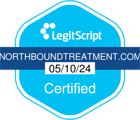The costs of substance abuse in the workplace
Addiction affects more than just those who’re addicted. Even if someone is a high-functioning alcoholic or addict, the ramifications of alcohol and drug abuse lead to many problems other than missing work and productivity loss. According to the National Council on Alcoholism and Drug Dependence Inc. (NCADD), substance abuse costs American employers $81 billion a year.
Why does drug abuse cost companies so much?
One of the most costly issues associated with addiction in the workplace is increased healthcare costs due to a higher prevalence of injury and illness related to drug abuse.
It also causes increased rates of absenteeism and “presenteeism” – when employees do show up but aren’t physically or mentally capable of doing their job.
A recent report from the National Safety Council, Shatterproof, a nonprofit committed to combating drug abuse and NORC of the University of Chicago, an independent research organization, found that employees struggling with substance abuse miss 50 percent more work days than their coworkers and roughly six weeks a year.
Additionally, drug abuse dramatically increases worker’s compensation and disability costs.
While all of these factors are exclusive to the employee, there are many secondary effects of drug abuse in the workplace. Reports show companies with higher rates of drug abuse demonstrate lower employee morale and higher rates of conflict between employees and their supervisors.
Drug abuse also leads to higher turnover rates. New employees have to be hired to replace those with drug problems.
What about the families?
Dealing with a loved one who’s struggling with addiction carries a huge burden of anxiety and carries over into many aspects of one’s life. This is bound to affect their job performance
Missing work to take care of a loved one is a huge issue for employers and can compromise the work environment. Family members also struggle with underperforming at work because of dealing with a loved one who is still struggling.
Does drug abuse affect all industries the same?
While addiction doesn’t discriminate, some industries do demonstrate significantly higher rates of substance abuse than others, making it more acceptable and in some cases, almost expected.
The professions that show that highest rates of substance abuse include:
- Mining
- Construction
- Food services
- Arts and entertainment
In professions consumed by long hours and late nights, employees sometimes resort to drinking and using drugs in their downtime. This isn’t necessarily the norm but research shows a strong correlation between longer working hours and alcohol abuse.


*Alcohol and drug abuse among adults 18 to 64, by industry.
Treatment pays for itself
Research shows that addiction treatment essentially pays for itself by significantly lowering healthcare costs. Through establishing an effective Employee Assistance Program (EAP), employees have easier access to treatment options and counseling services.
When employees have access to effective treatment options, they are more likely to seek help when they need it, which lowers the chances of addiction-related injuries and needed healthcare benefits.
By offering healthcare benefits that cover treatment, EAP’s also improve workplace morale and promote a drug-free workplace. These services ultimately reduce stigma in the workplace, making it much easier for employees to seek help when they need it the most.











